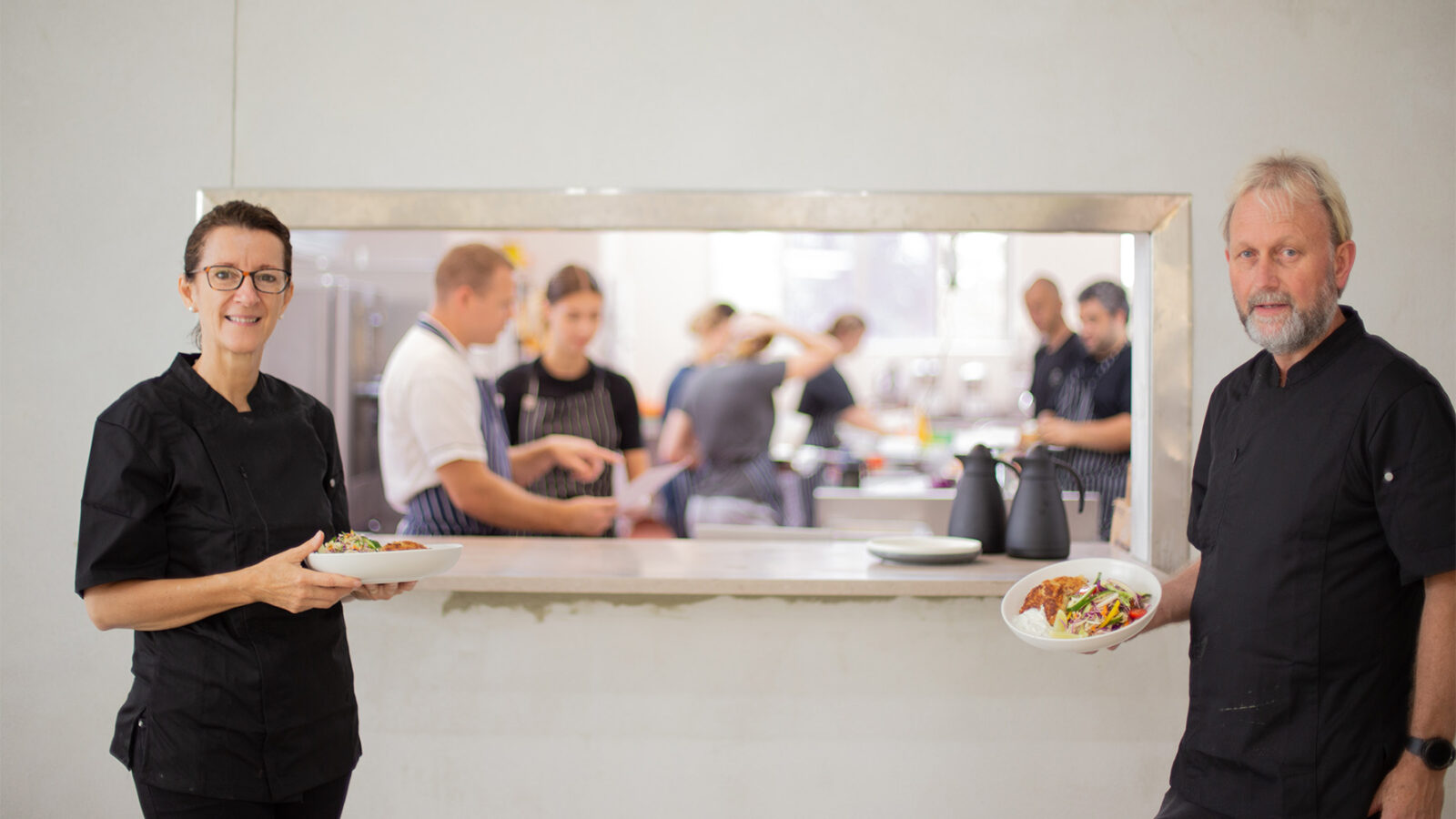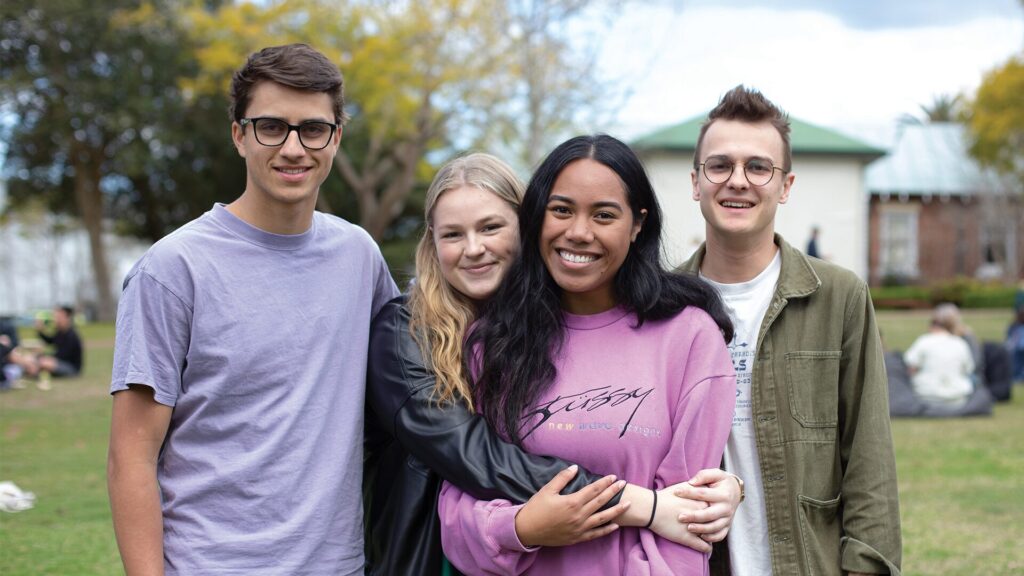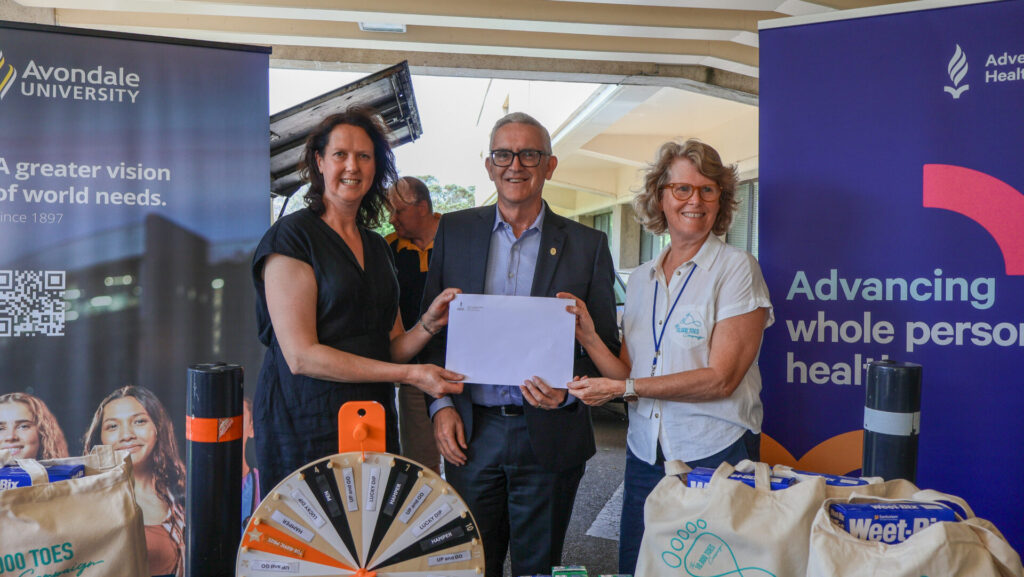It plays a central role in life on campus and will now begin to do so in the community. The cafeteria at Avondale University is getting a new facade, interior, kitchen equipment and two chefs following a lease of the 55-year-old building to a new restaurant business. Renovations began late last year and include a new cafe, a new stone-bake pizza oven, floor-to-ceiling bi-fold doors, floor tiles, synthetic turf for al fresco dining, and, soon, air conditioning.
The new executive chef is Bevan Lambert, an alumnus with almost 20 years’ experience as Food Services Manager at Sydney Adventist Hospital. He worked as an assistant to head chef Bruce Cantrill in the 1990s. Mr Lambert and sous chef Emi Reynaud lead a new team that will serve its first buffet meals in February. The two, along with industry nutritionists, have developed a seasonal vegetarian menu that offers healthy and, where possible, locally-sourced food. “You’ll see the love,” said Mr Lambert. “The food will look good and taste great because it’ll be all freshly homemade—with passion. Preparing and serving food matters to me and my team—we’re not in the business of filling holes in stomachs. Whatever food we present, we want it to fill those who eat here with anticipation and excitement.” A name change—7@Avondale—will add to the appeal.
Students, of course, are the primary clientele. They can choose from several meal packages and will use a “charge” card to pay only for what they eat when they eat it. 7@Avondale will also cater for staff members, on-campus conferences and events organised by external clients and, later in the year, members of the community.
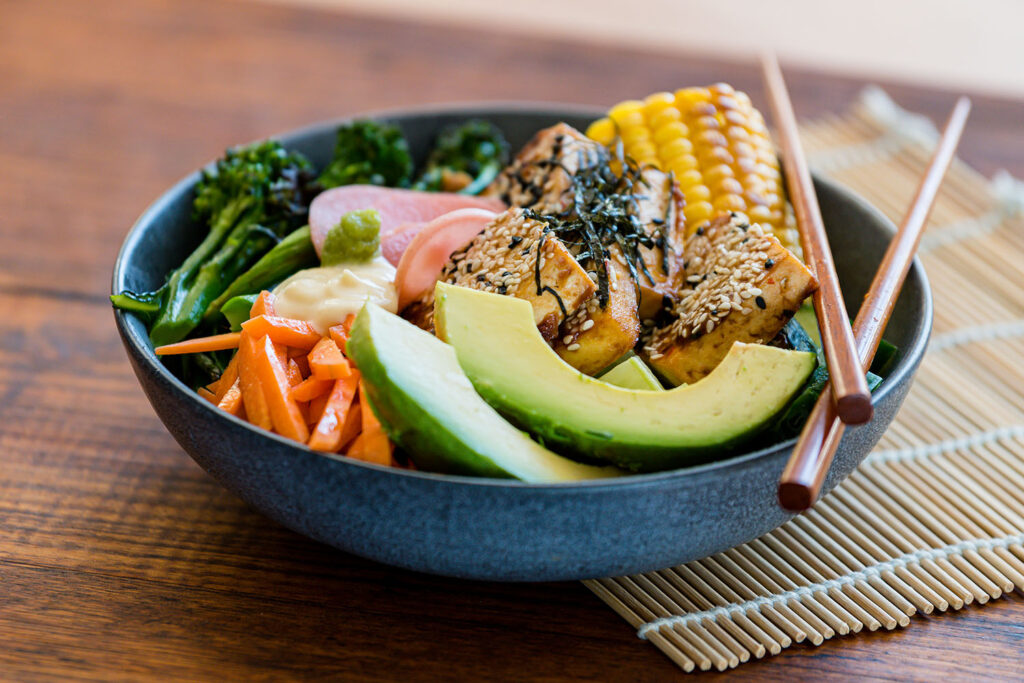
This reconnection with community is a nod to the late 1890s, when our pioneers looked locally for help to build the Avondale School for Christian Workers. First resident and manager of the newly-acquired estate Metcalfe Hare got Bethel Hall’s detached wing, which included a kitchen and dining room, back on schedule. Volunteers from the community responded to Hare’s call. “Women came to nail flooring boards . . . Old men painted window frames. A human chain passed bricks down to the men building an underground cistern.”1
Since these early days, when first cook Thomas Skinner taught the first cooking classes as part of the compulsory physiology unit, the food experience on campus has seen many changes and challenges. In 1912, staff members and students welcomed butter to the dining tables. In 1923/24, the kitchen relocated to the same level as the dining room along with the comfort of heated piping. The depression and war years saw disheartening meals such as beetroot tops or lettuce leaves and boiled wheat. “Brave hearts were known to stand and crow like roosters when it was served.”2 Some reprieve came with an unprecedented move: students could choose their meal companions. In a bold new approach, William Murdoch had the kitchen converted into a cafeteria-style servery in 1951. A familiar face around this time: the much-loved—and long-tenured—Louise Vetter, a calming influence in a kitchen crisis.
The biggest change: the building of the new cafeteria in 1966 with state-of-the-art kitchen equipment enabling cooks to produce 1000 meals in 100 minutes. Alumna Delmae Heise remembers the dining experience transition. “In Preston Hall, couples were not permitted to sit together. Boys entered one door and girls another. The new cafeteria became like date night with guys asking girls out for meals. We also had a new lounge area where students could hang out together.”
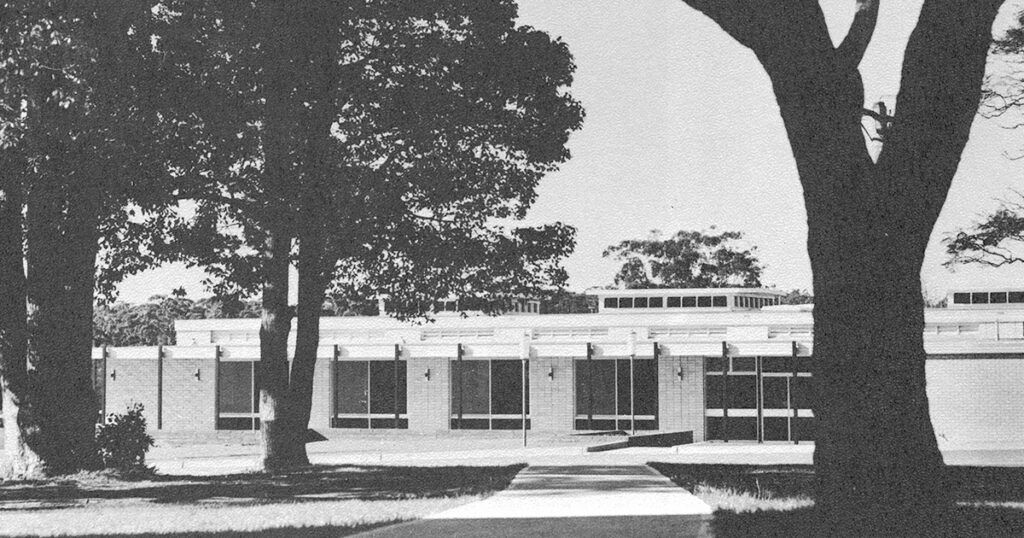
Bruce Cantrill took the toque blanche in 1982 and describes his 20 years in the role as some of the best of his life. “I loved the interaction with the students. They would rip me off, and I would rip them off. That made the hard work a lot of fun.” He recalls a mini van, defrocked of its wheels, placed in the middle of the dining area with all the tables rearranged to form the shape of a snail. And the time students put all the crockery and utensils in the pool. “My staff swapped aprons for swimmers to collect them. We served meals on disposable plates that day.” A cafeteria staff member in the 1990s, Delmae Heise loved working for Bruce and remembers students felt the same way, “He never asked anyone to do anything he wouldn’t do himself.”
Nick Hartigan took the culinary reigns in 2005. He oversaw the removal of the dishwashers from the centre of the dining area, the relocation of the bookshop to the front of the cafeteria, and the creation of Pointon Place for an alfresco experience. With cafs still in fashion, Mr Hartigan once found all the tables and chairs stacked as a pyramid up to the skylights. “The Caf facilitates community,” he says. “As staff, we get to influence and see the personal development of students who are on campus during a growth period in their lives. This is maybe the most rewarding aspect of my time at Avondale.”
7@Avondale is one of several initiatives of Avondale University Partnership Alliance. An independent organisation, it seeks donors to help Avondale fulfil its mission. Chief Executive Officer Dr Peter Beamish is proud to feed all profit back for the benefit of Avondale. Profit will support research, service learning trips, and other projects that “impact lives for good—and not only ours but of those in the community, too.”
1. Hook M (1998) Avondale: Experiment on the Dora, Avondale Academic Press, Cooranbong, NSW, p. 37.
2. Ibid, p. 165.
Rachel Humphries, Alumni Relations Officer, Avondale University.

